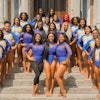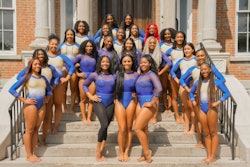A Mission Critical Task: Training African Americans for Institutional Advancement Leadership
One day while resting after my exercise workout, I noticed youngsters around the ages of 5 to 7 carrying tennis rackets as big as their little bodies. Accompanying these children were their parents who appeared to be devoted to their children’s achievements related to the game of tennis. This was interesting because the youngsters were on their way to the tennis center of the athletic club to be subjected to the demanding rigors of tennis lessons.
At that moment, the process of educational leadership development training hit home for me. The effort, resources, commitment and energy put into the process of tennis lessons for children, whose tennis rackets were bigger than they were, clearly pointed toward an investment in the future of each child. These parents had positioned their children to become competitive athletes, with the intention that one of these youngsters might become a world-class tennis champion.
In a similar manner, historically Black colleges and universities must be devoted to training their children for leadership in higher education. In doing so, they must position the next generation of institutional advancement officers to become executives.
African Americans and other people of color are not found in significant numbers in the various components of higher education institutional advancement operations at predominantly White institutions. The various components include: public relations, development, major gifts, planned giving, annual fund, corporation and foundation, estates and income planning, alumni affairs and foundation management. The numbers of African American professionals are just as low at HBCUs since these institutions lack the resources to hire robust development staffs who seek philanthropic funding. No other sector in higher education evidences a lack of philanthropic resources and institutional advancement management more than historically Black colleges and universities.
HBCUs, therefore, must begin to plan and develop leadership initiatives to increase the extremely low numbers of people of color in the profession of institutional advancement in higher education.
My yearlong experience as a Clarence J. Jupiter Fellow in residence in Institutional Development was hosted by the University of New Orleans, a predominantly White Research II institution. This leadership development experience was extremely productive.
I was given real-time mission critical tasks and projects to complete, and I participated in heady deliberations that involved seeking and identifying resources for “the good” of the university.
This type of higher education leadership training is gravely needed for African Americans who desire a career in higher education advancement as an administrator. All too often the African-American community has approached leadership development using the “matter from heaven” model by which a person comes to the forefront more or less by their sheer desire and natural skills, but generally with very limited amounts of formal leadership training and applied organizational training. This type of leadership development is no longer productive.
The time has come for real change in leadership development training for HBCUs in the 21st century. Just as HBCUs rose to the challenge during the postslavery and civil rights periods, they must now produce dynamic institutional development leadership for the 21st century.
— John M. Berry is the director of development at Winston-Salem State University in North Carolina and a doctoral student at Union Institute in Ohio.
© Copyright 2005 by DiverseEducation.com



















